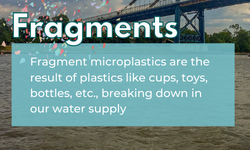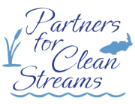 Microplastics are plastics that are less than 5 mm in size and a lot about them is unknown. Research has shown that microplastics can cause physical harm to wildlife when ingested. Microplastics can absorb other chemicals, such as trace metals, polycyclic aromatic hydrocarbons, pesticides, and some pathogens. Initial research has also suggested that plastic additives can contribute to disruption in the endocrine system and possibly cancer when plastic degrades. Currently, there are five types of microplastics categorized by the USGS: fibers, foam, fragments, beads/pellets, and film. This categorization was from a study of microplastics in the Great Lakes Region published in 2016 by USGS.
Microplastics are plastics that are less than 5 mm in size and a lot about them is unknown. Research has shown that microplastics can cause physical harm to wildlife when ingested. Microplastics can absorb other chemicals, such as trace metals, polycyclic aromatic hydrocarbons, pesticides, and some pathogens. Initial research has also suggested that plastic additives can contribute to disruption in the endocrine system and possibly cancer when plastic degrades. Currently, there are five types of microplastics categorized by the USGS: fibers, foam, fragments, beads/pellets, and film. This categorization was from a study of microplastics in the Great Lakes Region published in 2016 by USGS.
Fragment microplastics are the result of plastic items such as bottles, toys, cups, utensils, and breaking down in our water supply. From the USGS study, researchers found that in water run-off events, or times when it rained, there were significantly more fragments out water supply. We are partners on the Trash Trappers for a Cleaner Toledo Project for Trash Free Waters Toledo. Toledo is installing trash trappers to take care of the microplastics and plastic marine debris before it becomes microplastics in the water while we help remove the marine debris on land before it enters our waterways.
